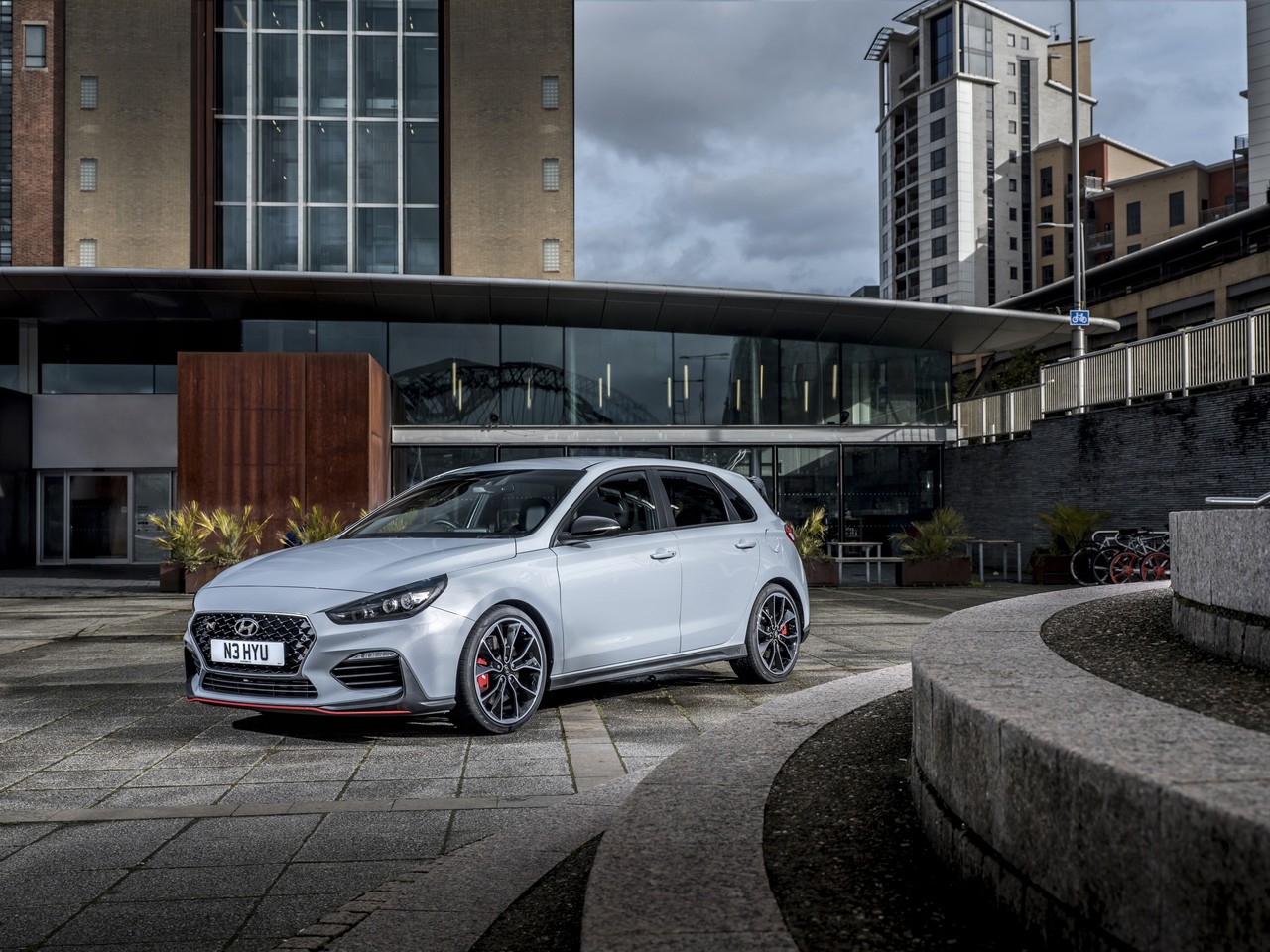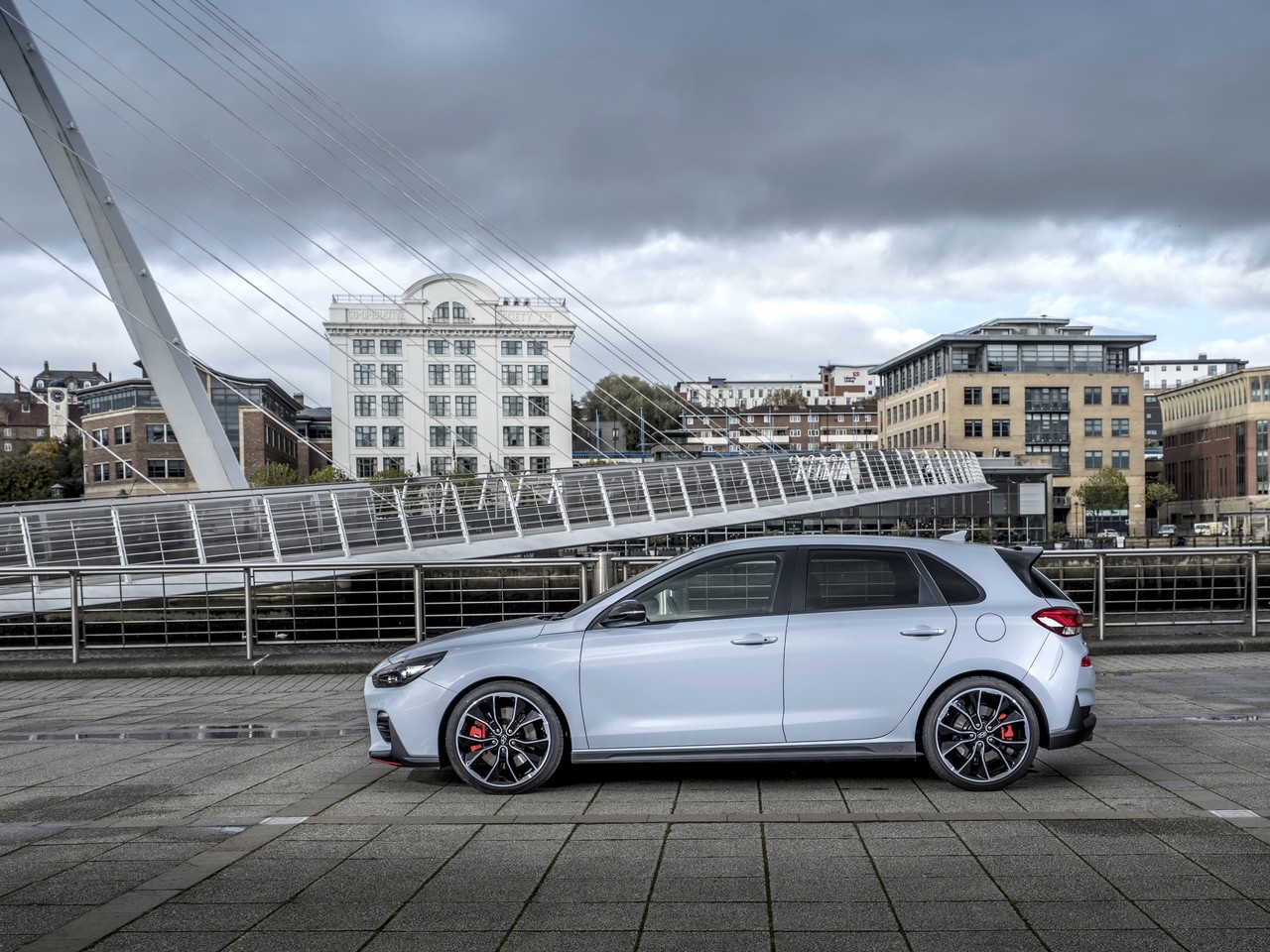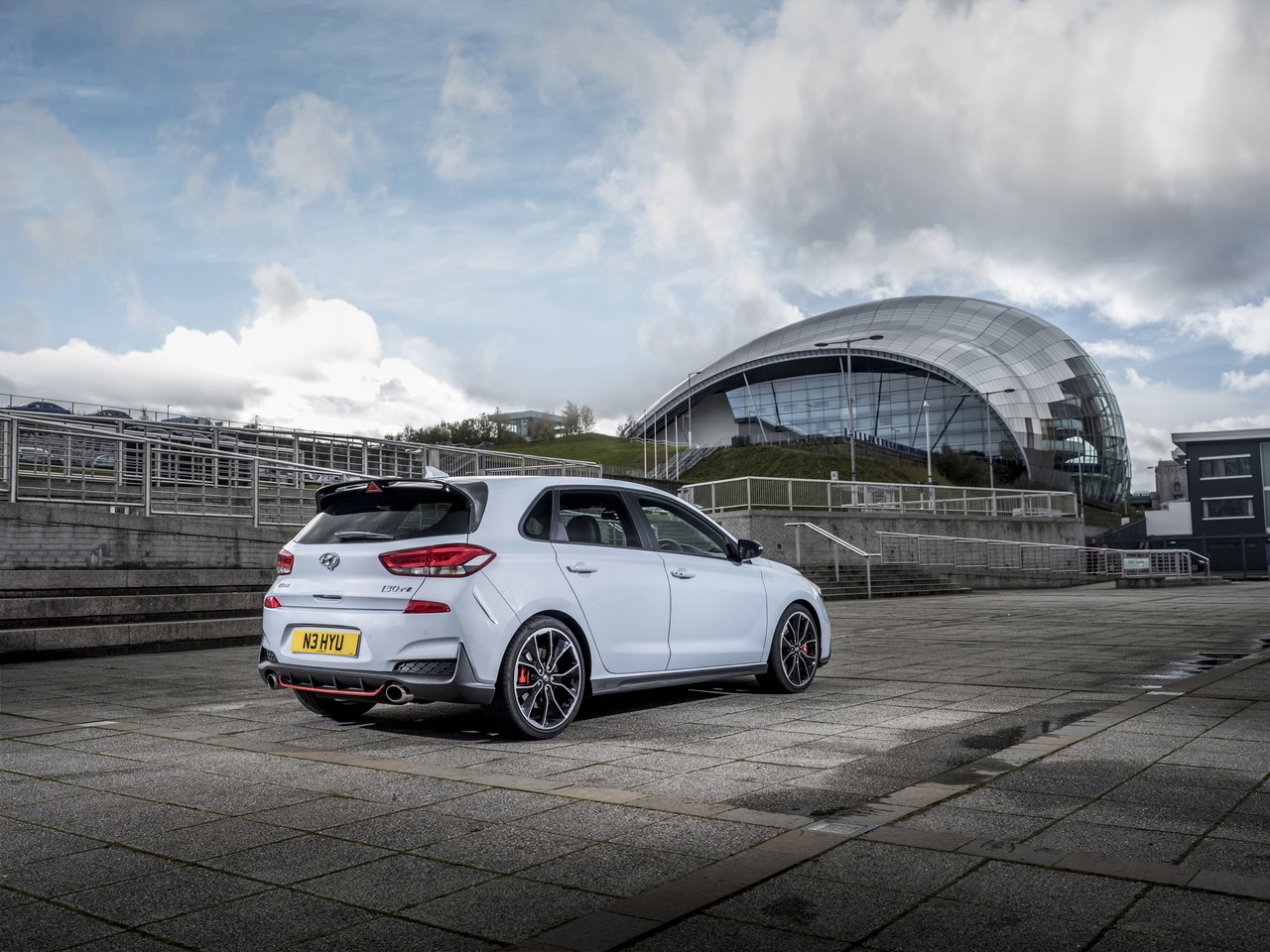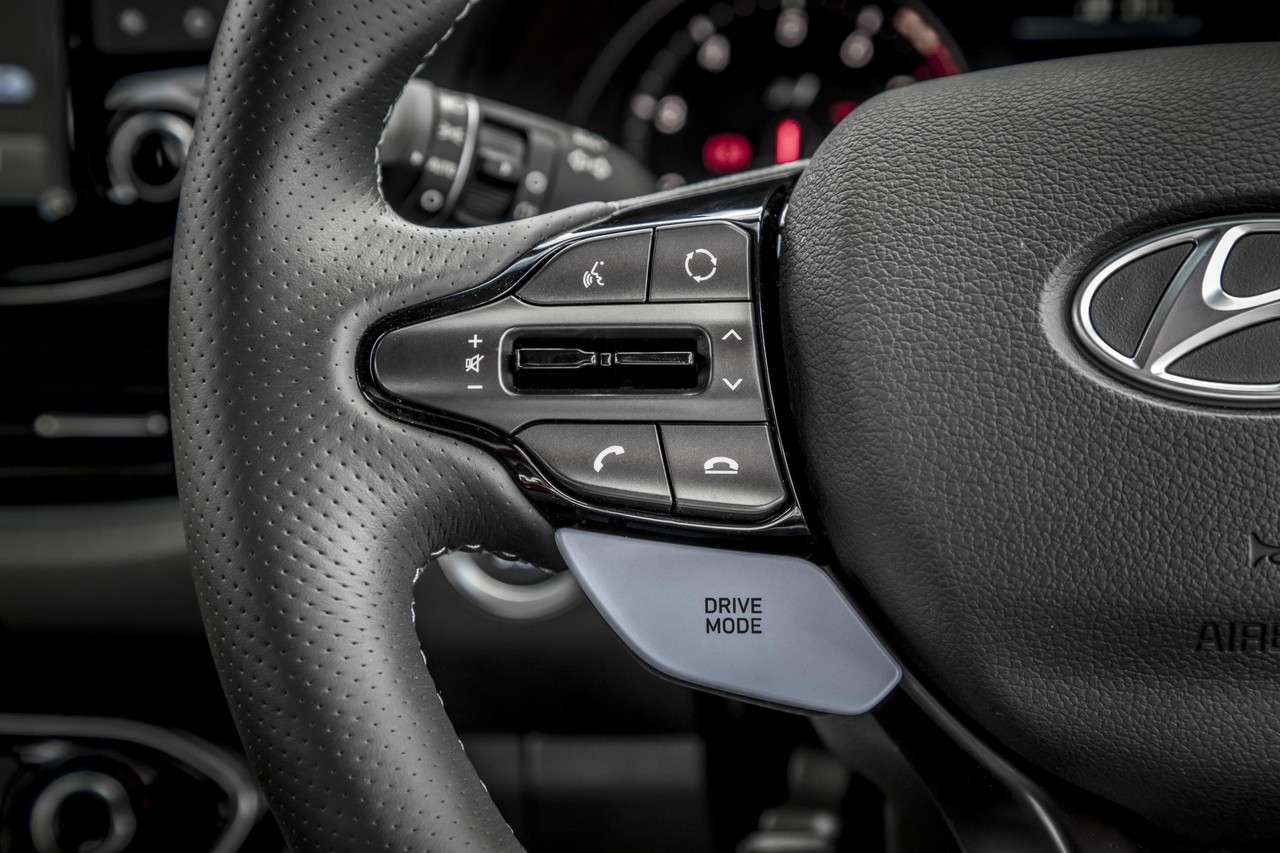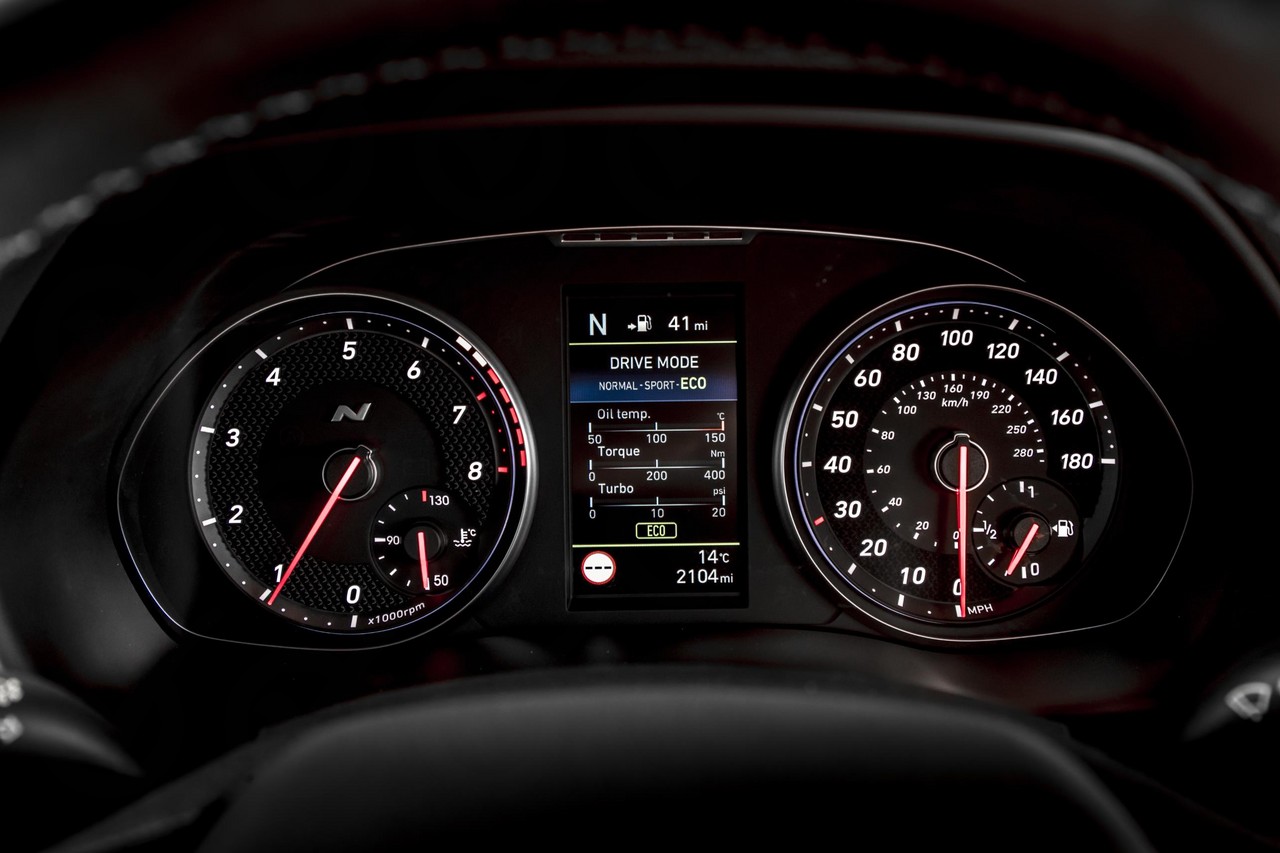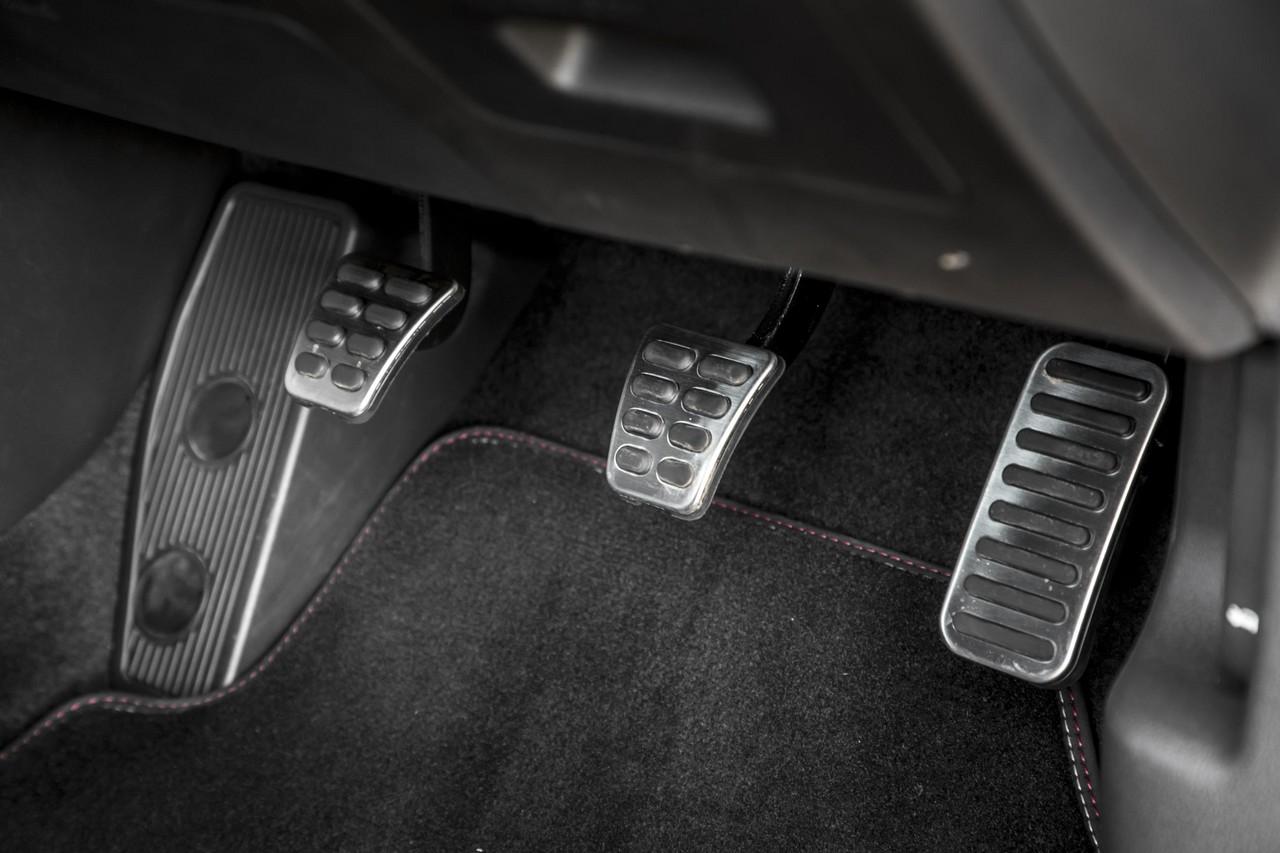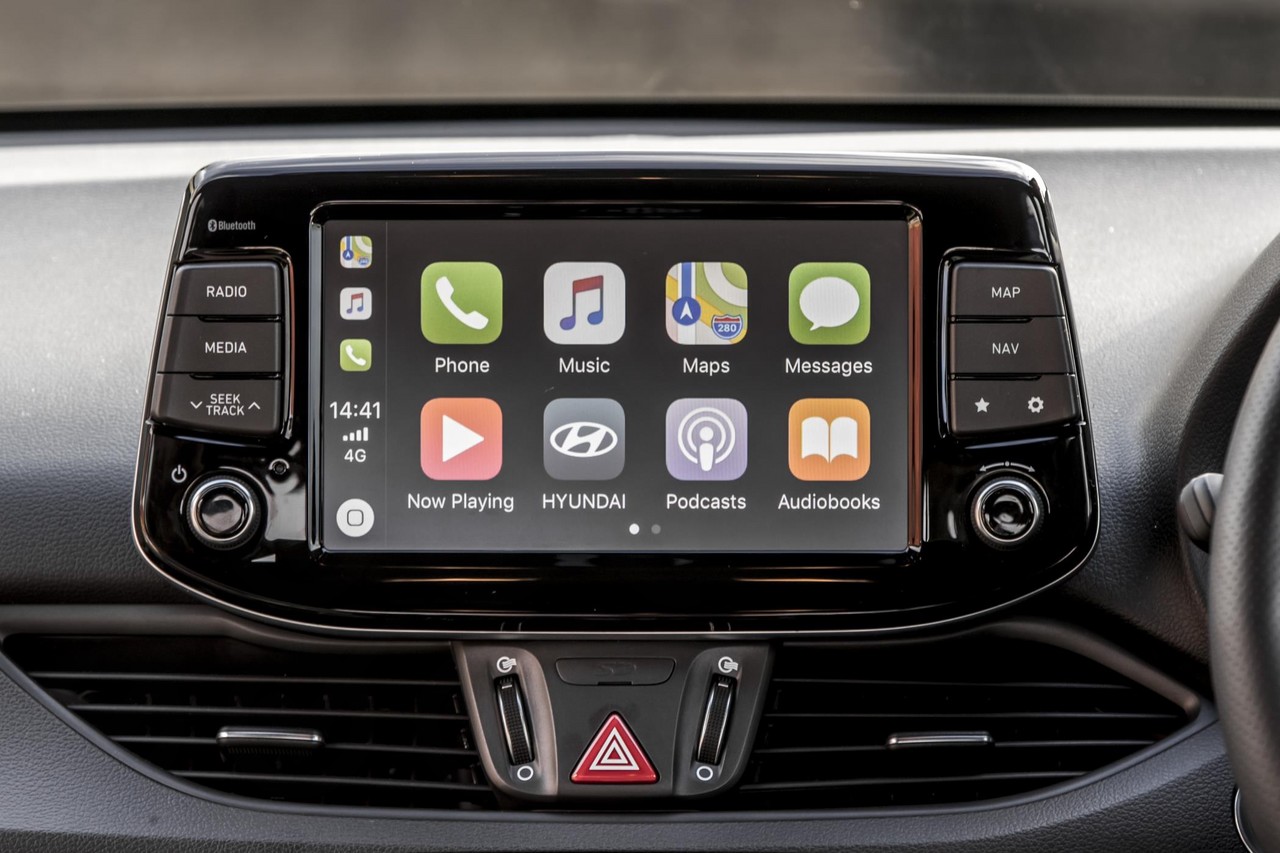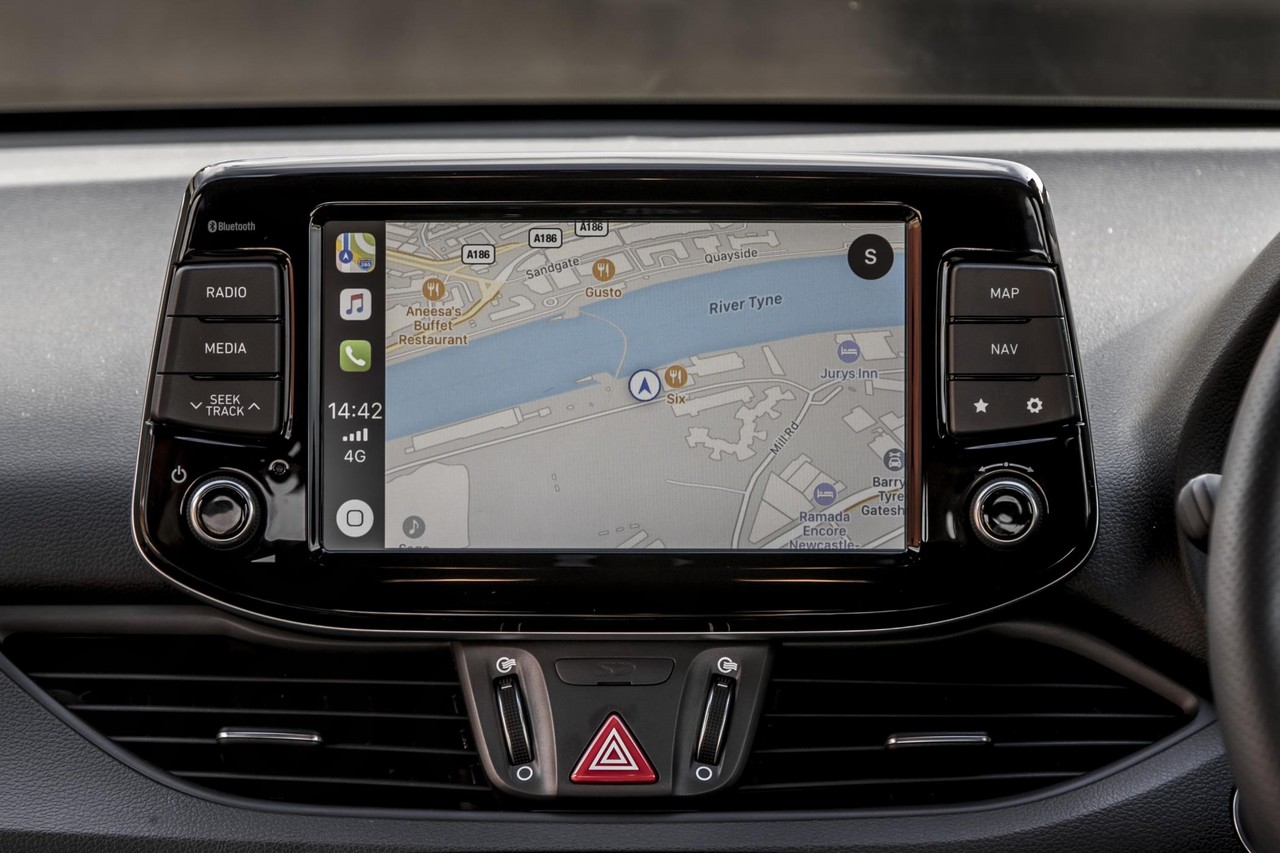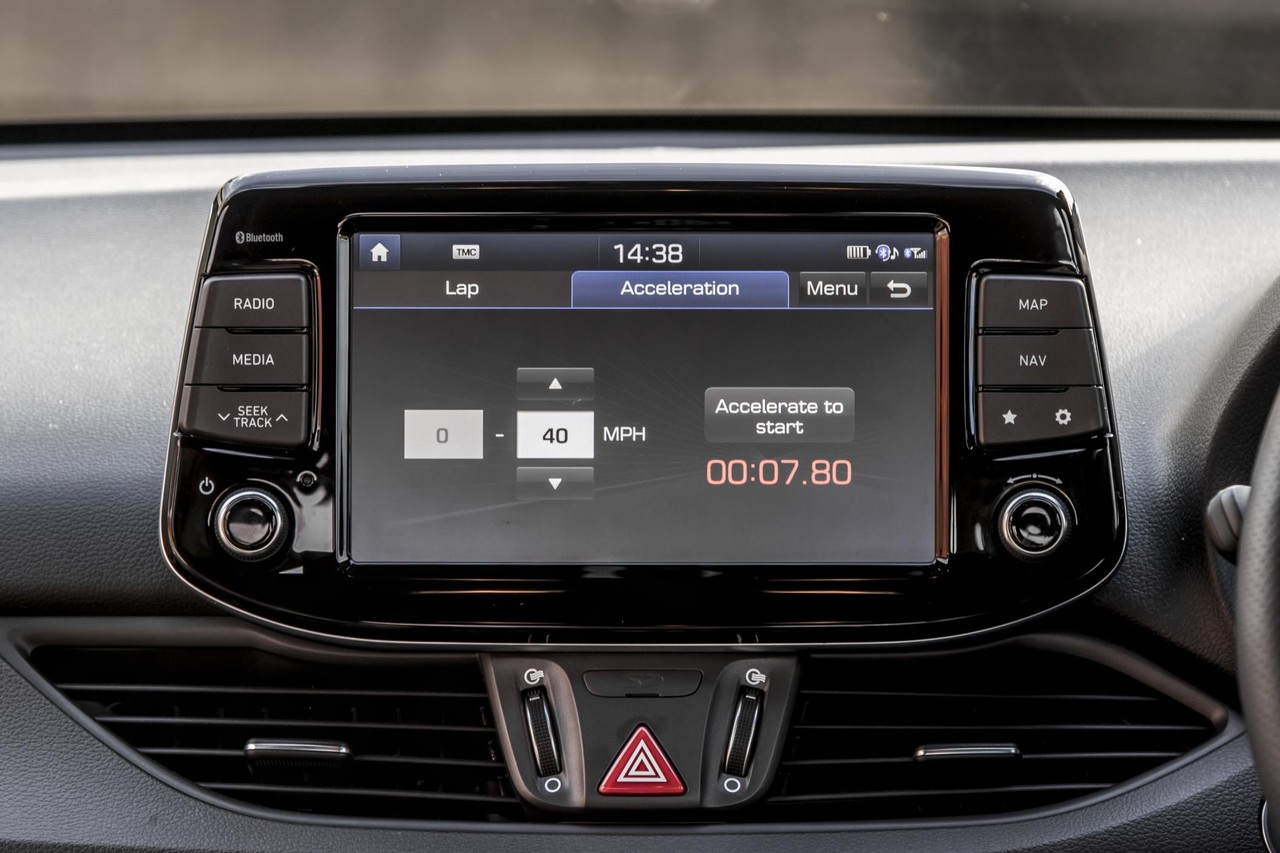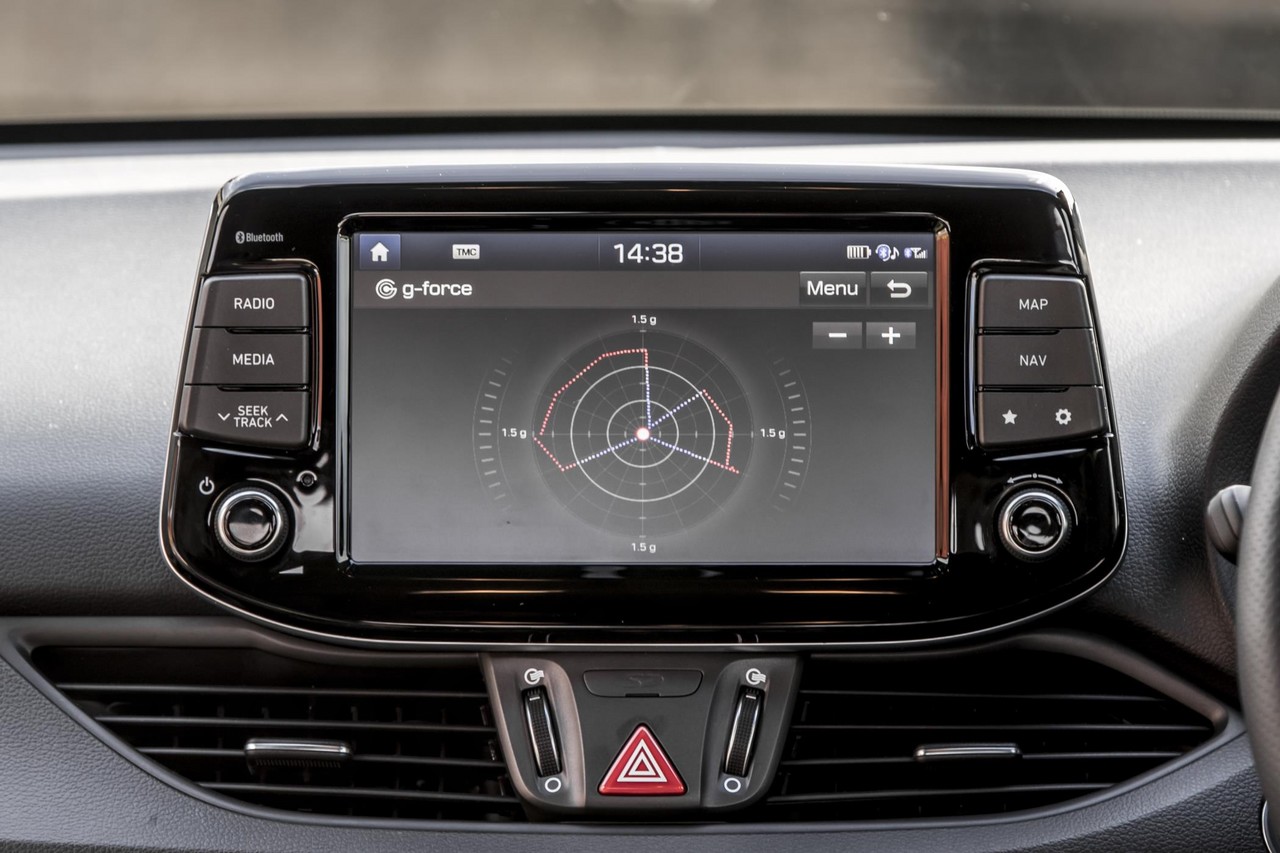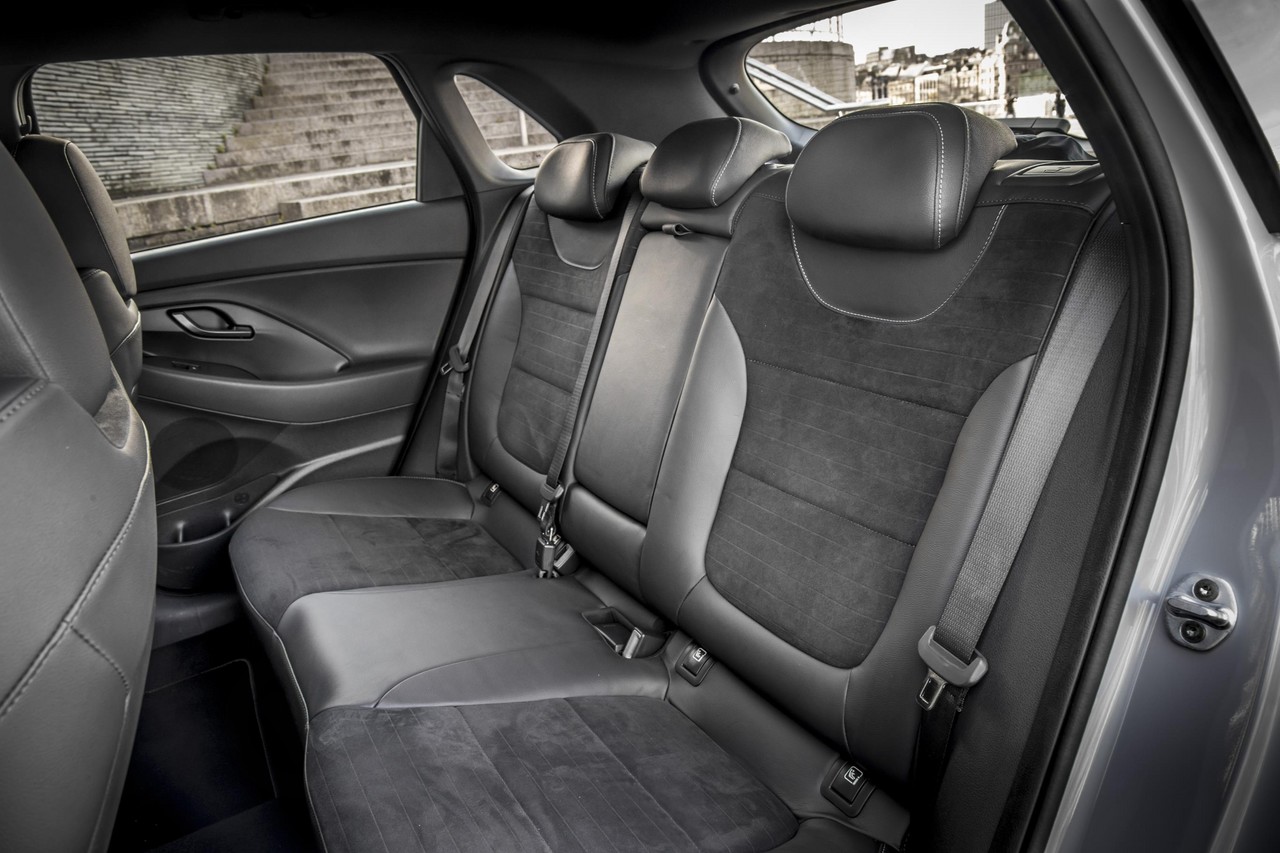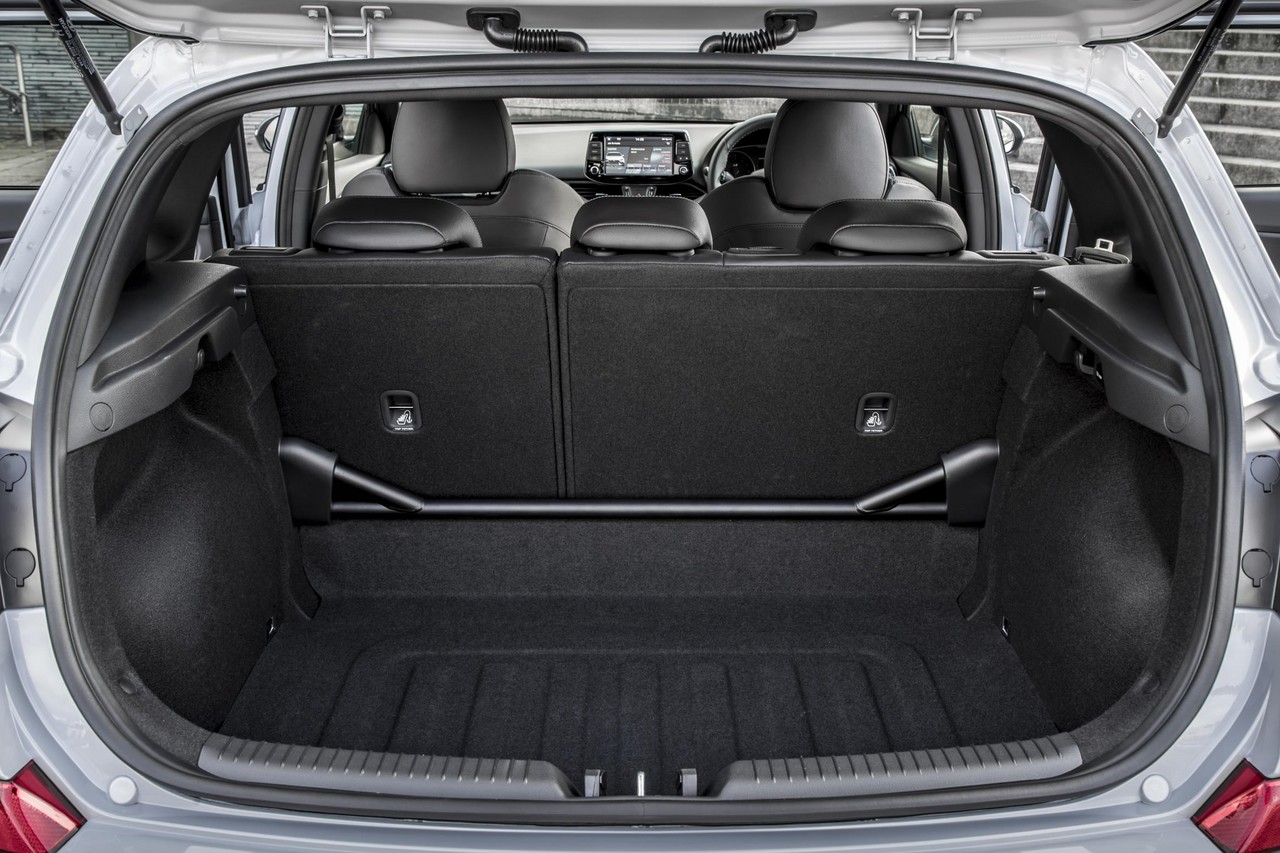
- Autonomous Emergency Braking fitted as standard (unlike standard Hyundai PD i30 )
- In Normal mode, suspension provides good body control and compliance
- Effective brakes and progressive pedal feel
- 2.0-litre G4KH turbo petrol engine is powerful…
- … but torque is delivered suddenly in the middle of the rev range
- In ‘Sport’ and ‘N’ modes, suspension is too stiff
- Steering is heavily weighted and lacks feel
- Space between brake and accelerator pedals makes heel-and-toe shifting difficult
- Electric Sound Generator (for synthetic engine noise) is loud and contrived in Sport and N modes
- Rear stiffness bar reduces luggage capacity
- Dull interior
Overview
Released in Australia in April 2018, the Hyundai PD i30 N was initially available as a small, five-door hatchback, with the ‘i30 Fastback N’ following in March 2019. Manufactured in Nosovice, Czech Republic, the front-wheel drive Hyundai PD i30 N was powered by a 2.0-litre turbocharged petrol engine that was mated to a six-speed manual transmission. The ‘N’ in the name of the i30 N stood for Namyang, the location of Hyundai’s global R&D centre in South Korea. According to Hyundai, the i30 N also underwent 10,000 kilometres of driving on the Nordschleife track at the Nurburgring for durability testing.
Upon its local release, the Hyundai i30 N had a Manufacturer’s List Price (MLP) of $39,990 (excluding on-road costs), though could be specified with an extra-cost Luxury Pack ($3000).
G4KH ‘Theta’ 2.0 T-GDI engine
The Hyundai i30 N was powered by Hyundai’s 2.0-litre G4KH ‘Theta’ engine. Key features of the G4KH engine included its aluminium block and cylinder head, double overhead camshafts, four valves per cylinder, twin-scroll turbocharger, electronically-controlled continuously variable valve timing (‘E-CVVT’), two-stage induction system, direct petrol injection and compression ratio of 9.5:1. The G4KH engine also had an overboost function that could temporarily increase torque from 353 Nm to 378 Nm.
As standard, the Hyundai i30 N had a launch control function that could control engine torque when accelerating from rest. With electronic stability control switched off and the clutch disengaged, first gear could be engaged immediately by releasing the clutch pedal within five seconds after full throttle acceleration. The launch control function enabled the Hyundai i30 N to accelerate from rest to 100 km/h in 6.2 seconds.
At the base of the windscreen (inside the cabin), the Hyundai i30 N had an ‘Electronic Sound Generator’ which emitted electronically-generated engine noises. The Hyundai i30 N also had a dual muffler exhaust with a variable valve. Depending on the drive mode selected, the size of the valve opening could change to vary exhaust noise.
| Engine | Trans. | Peak power | Peak torque |
|---|---|---|---|
| 1998 cc G4KH turbo petrol I4 | 6sp man. | 202 kW at 6000 rpm | 353 Nm at 1450-4700 rpm (o’boost: 378 Nm at 1750-4200 rpm) |
Transmission
The six-speed manual transmission for the Hyundai i30 N had a ‘rev matching’ function which could be activated by pressing a button on the steering wheel. Specifically, the rev matching function:
- Could be used to increase engine revs when shifting from a higher to a lower gear; and,
- Depending on drive mode (from Eco, Normal, Sport, N and Custom), could allow smoother or faster downshifts.
An eight-speed dual-clutch transmission not expected to be available until 2019.
Electronic Limited Slip Differential
While the Hyundai i30 N was front-wheel drive, it had an electronically controlled limited slip differential (E-LSD) which enabled the front wheels to turn at different speeds by applying different amounts of torque (depending on load transfer from the inner front wheel to the outer wheel). Through operation of the E-LSD, wheel slip and understeer were reduced.
Body and dimensions
Compared to the Hyundai PD i30 on which it was based, the PD i30 N hatchback was 5 mm shorter (at 4335 mm) and 8 mm lower (1447 mm), though width (1795 mm) and wheelbase length (2650 mm) were unchanged. With its rear stiffness bar (standard for Australia), the Hyundai PD i30 N had a cargo volume of 381 litres.
Relative to the i30 N hatchback, the Hyundai i30 N fastback was 120 mm longer (at 4455 mm) and 28 mm lower (1419 mm), but had the same width and wheelbase. Furthermore, cargo volume was 436 litres.
The Hyundai PD i30 N hatchback had a drag co-efficient of 0.320 Cd, while the i30 N fastback had a drag co-efficient of 0.297 Cd.
Suspension
The Hyundai PD i30 N had MacPherson strut front suspension and multi-link rear suspension. For Australian-delivered vehicles, the i30 N was equipped with electronically controlled dampers (Hyundai’s ‘Electronic Controlled Suspension’ or ECS) and the driver could select adjust damper settings from comfort to high-performance.
Steering
The Hyundai PD i30 N had rack-and-pinion steering with Hyundai’s rack-mounted motor-driven power steering (R-MDPS) whereby the steering assist system was located in the steering gear. The steering had a ratio of 12.31 such that the steering wheel required 2.14 turns from lock-to-lock. Furthermore, the PD i30 N had a turning circle of 11.6 metres.
Safety equipment
Standard safety equipment for the Hyundai PD i30 N included dual front airbags, a driver’s knee airbag, front seat-mounted side airbags, full-length curtain airbags, ABS, electronic brake force distribution, brake assist, electronic stability control, traction control and front seatbelts with pre-tensioners and load limiters.
As standard, the PD i30 N was equipped with the following Hyundai ‘SmartSense’ technologies –
- Autonomous Emergency Braking (AEB) with Front Collision Warning System (FCWS): operating at speeds above 10 km/h, AEB with FCWS used a front radar sensor and camera sensors to monitor the road ahead for vehicles and pedestrians. AEB operated in three stages: 1) initial warnings (visual and acoustic), 2) partial braking and 3) maximum braking when a collision was assessed to be imminent. AEB would attempt to bring the vehicle to rest if activated at speeds of up to 64 km/h for pedestrians and up to 80 km/h for vehicles. At speeds between 80 km/h and 180 km/h, AEB would reduce vehicle speed to reduce the severity of the collision;
- Lane Keeping Assist System (LKAS): operating at speeds of 60 km/h and above, LKAS monitored the vehicle’s position within its lane. Initially, the system provided visual and audible warnings if the vehicle was approaching lane markings. If the vehicle was about to exit its lane, corrective steering would be applied to guide the vehicle to a safe position within its lane; and,
- Driver Attention Alert (DAA): operating at speeds of 64 km/h and above, DAA monitored steering angle, steering torque, vehicle position within its lane and driving pattern to detect reckless or fatigued driving. If the system detected inattentive driving patterns, an audible tone and message would appear on the instrument display panel to alert the driver. The driver could also adjust a setting for the system’s sensitivity.
Euro NCAP testing
In Euro NCAP testing , the Hyundai PD i30 received a five star safety rating which included an 88 per cent adult occupant protection rating and an 84 per cent child occupant protection rating. In the frontal offset test, protection of the driver’s head and feet were rated as good, but chest and lower leg protection was rated as adequate (i.e. a slight risk of serious injury) and thigh protection as marginal (a moderate risk of serious injury) due to structures in the dashboard. In the side impact test, protection of the driver’s chest was rated as adequate; in the more severe pole test, chest protection was rated as marginal.
Wheels, tyres and brakes
For Australian-delivered vehicles, the Hyundai PD i30 N has 8.0J x 19-inch alloy wheels with 235/35 R19 Pirelli P-Zero tyres. Furthermore, the i30 N has 345 mm by 30 mm ventilated front brake discs and 314 mm by 20 mm solid rear discs.
Features: Hyundai i30 N
The standard infotainment system for the Hyundai i30 N had an eight-inch touchscreen with satellite navigation, six speakers, digital radio tuner (DAB+), Bluetooth mobile phone connectivity, voice recognition and Apple CarPlay and Android Auto smartphone integration. The touchscreen could also display engine information – such as power and torque outputs, and boost pressure – a lap timer and acceleration timer.
Beyond this, standard features for the Hyundai i30 N included front sports seats with ‘Performance Blue’ interior stitching, driver’s seat with four-way power adjustable lumbar support and an extendable seat cushion, dual-zone climate control air conditioning, cruise control, LED headlights and front indicators, LED daytime running lights, LED tail-lights, a rear view camera, dusk-sensing headlights, leather-wrapped steering wheel, remote central locking, power mirrors and windows, tilt and telescopic steering wheel adjustment, alloy sports pedals, black headlining, 4.2-inch TFT instrument cluster display, a 12 volt power outlet (in cargo area), a tyre pressure monitoring system, trip computer and an immobiliser.
As standard, the Hyundai i30 N also had:
- Five selectable drive modes – Eco, Normal, Sport, N and Custom – that could be selected via buttons on the steering wheel. The different modes adjusted throttle mapping, settings for the electronically-controlled dampers, the ESC system, E-LSD operation, steering weight, rev-matching functions and the variable exhaust system; and,
- A ‘Rear Park Assist’ system which could detect parking spaces and provided automated steering for reverse parking manoeuvres, while the driver controlled vehicle speed.
Luxury Pack
As an extra-cost option, the Hyundai i30 N could be specified with a ‘Luxury Pack’ which included front park assist (automated steering for front-entry parking), front seats with suede inserts and leather bolsters, twelve-way power adjustable front seats with driver’s seat memory settings, a front passenger seat cushion extension, heated front seats, an inductive mobile phone charging pad (Qi standard), rain-sensing wipers, a heated steering wheel, proximity key and push-button start, an electrochromatic interior rear-view mirror, ‘Solar control’ windscreen glass, power folding exterior door mirrors, LED courtesy and puddle lights, rear privacy glass and a luggage net.
For $5000, the Luxury Pack included a panoramic sunroof.
